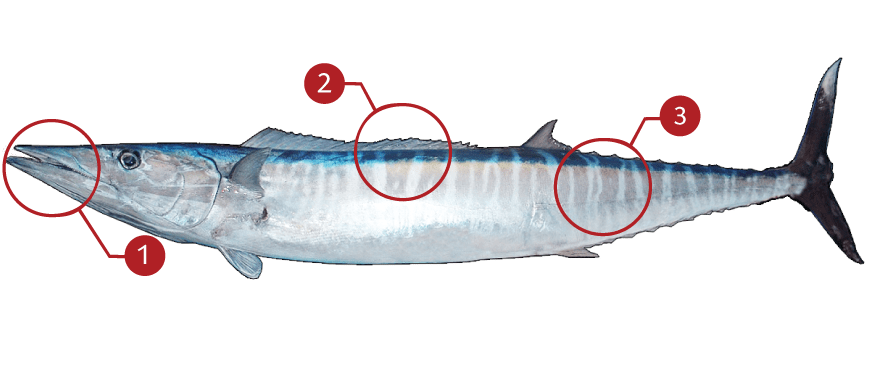WAHOO
How to identify a Wahoo
The upper jaw is movable and the teeth are large, strong, and laterally compressed. The well defined lateral line dips noticeably near the middle of the first dorsal fin, further forward than on the similar looking tanguigue (Scomberomorus commerson), and is wavy back at the tail. The back is a brilliant, deep blue sometimes described as metallic or electric blue. Bright blue vertical bands, or tiger stripes, flow down the sides into silver and sometimes join into parts of the belly. Those stripes are not always prominent in large specimens and, occasionally, may be missing entirely.
Where to catch Wahoo
Wahoo are found worldwide in tropical and temperate seas. Pelagic and seasonally migratory, it tends to live a solitary life or travel in small groups of 2 to 6 fish. There are indications of seasonal concentrations off both the Pacific and Atlantic coasts. They are found around wrecks and reefs that hold smaller fish that it feeds upon, but they may be found far out at sea.
IDENTIFICATION

| |
The upper jaw is movable and the teeth are large, strong, and laterally compressed |
| |
The back is a brilliant, deep blue sometimes described as metallic or electric blue |
| |
Bright blue vertical bands, or tiger stripes, flow down the sides into silver and sometimes join into parts of the belly |
TARGET AREAS
|
|
Acknowledgements: We thank TAKEMEFISHING.org (www.takemefishing.org), Wisconsin Department of Natural Resources, Indiana Department of Natural Resources for their contributions to these FISH FACTS.

